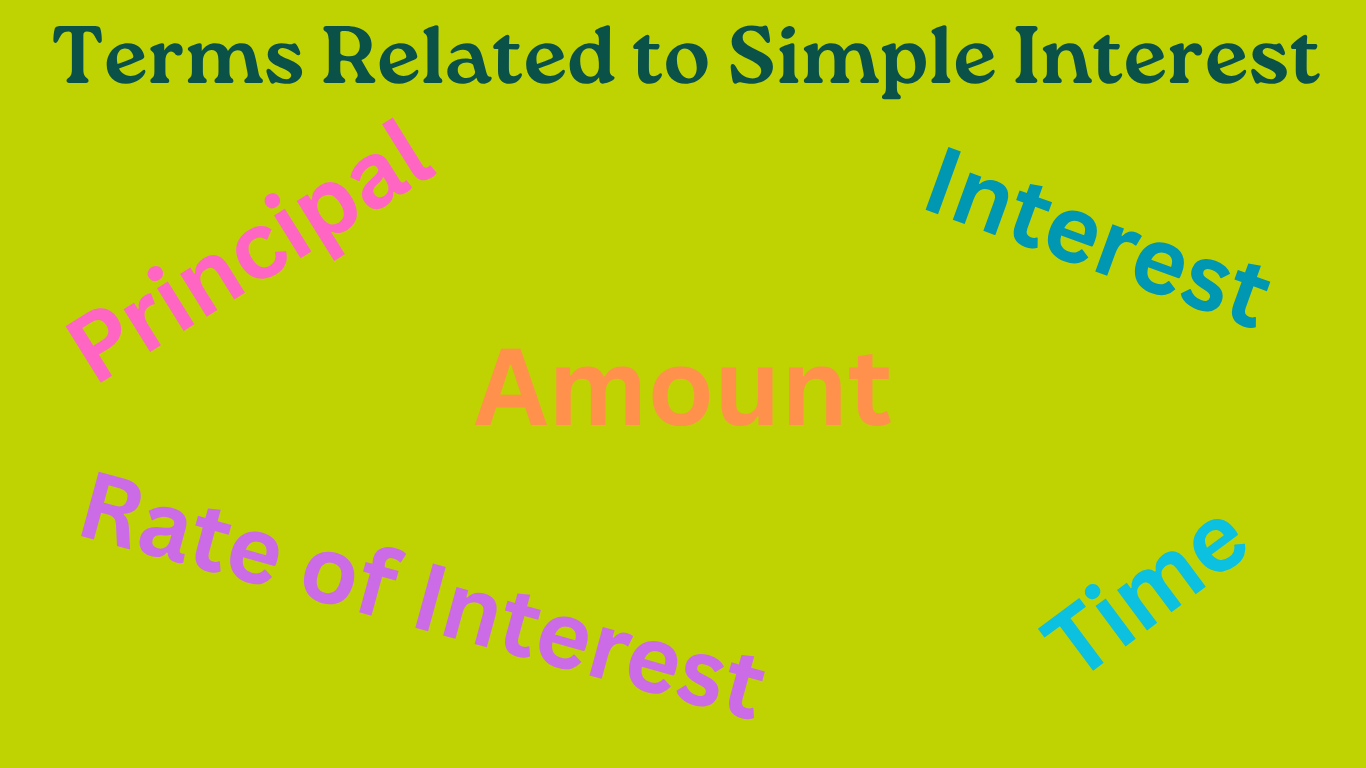Subscribe to our ▶️ YouTube channel 🔴 for the latest videos, updates, and tips.
Terms Related to Simple Interest
In terms related to simple interest we will learn all the terms related to simple interest. The terms related to simple interest are Interest, Principal, Amount, Simple Interest, Time or period of time, Rate or rate of interest and Simple interest formula.
INTEREST:
Nairitee deposited $100 in a bank. She finds after one year that her money is increased from $100 to $108. How? Actually the bank has given her $8 extra as interest on her money deposited.
When a person borrows some money from a money lender for a fixed period or when he/she takes a loan from the bank for a fixed period, he/she pays some extra money apart from the actual money borrowed. This extra money is called the interest.
PRINCIPAL AND AMOUNT:
If we keep our money in a bank, the bank pays us some extra money, called interest apart from the money deposited. The money which we borrow or deposit is called the principal.
The interest is charged at the rate of a fixed percentage on the principal as per agreement between the borrower and lender. This fixed percentage is called the rate of interest.
The sum of the Principal and Interest is called the Amount.
The period for which money is borrowed or lent is called the time.
Let us summarise these terms.
Principal: The money borrowed or lent.
Interest: The extra money to be given to the lender at the end of a fixed period for using the principal.
Amount: The money to be returned to the lender including interest. (Principal + Interest)
Time: The fixed period for which the money is borrowed or lent
Rate: The fixed percentage on the principal per annum.
Amount = Principal + Interest
Principal = Amount - Interest
Interest = Amount - Principal
Simple Interest:
The interest which does not earn further interest on it is called the simple interest. In such a case, only principal money earns interest.
Let us understand this more clearly Suppose, you lend $100 to someone for two years at the simple interest rate of 10% per annum. First year, your money will earn $10 as interest. Second year, only your principal money ie. $100 will earn interest The interest of the first year i.e. $10 will not earn any further interest. The simple interest depends upon three factors.
(i) Principal
(ii) Period of Time
(iii) Rate of Interest.
We represent the Principal by P, Rate of interest per annum or year by R and Time by T. We can calculate the simple interest by the following formula:
Simple Interest = \(\frac{\textrm{P × R × T}}{100}\)
We can also calculate the simple interest by unitary method. Let us consider some examples.
1. Calculate the simple interest on $300 for 2 years at the rate of 25% per annum.
Solution:
Method I (Using formula):
P = $300,
T = 2 years,
R = 25%
Simple Interest = \(\frac{\textrm{P × R × T}}{100}\)
= $\(\frac{\textrm{300 × 25 × 2}}{100}\)
= $ 3 × 25 × 2
= $150
Method II (Unitary Method):
Rate of 25% per annum means interest on $100 for 1 year is $25.
Interest on $100 for 1 year = $25
Interest on $1 for 1 year = $\(\frac{25}{100}\)
Interest on $300 for 1 year = $\(\frac{25}{100}\) × 300
Interest on $400 for 2 years = $\(\frac{25}{100}\) × 300 × 2
= $150
2. Nitheeya borrowed $3700 from Nairitee at a simple interest rate of 12% per annum for 3 years. What amount will Nitheeya pay to Nairitee after 3 years?
Solution:
Method I (Using Formula):
P = $3700, T = 3 years, R = 12
Simple Interest = \(\frac{\textrm{P × R × T}}{100}\)
= $\(\frac{\textrm{3700 × 12 × 3}}{100}\)
= $ 37 × 12 × 3
= $1332
Amount = Principal + Interest
= $3700 + $1332
= $5032
Method II (Unitary Method):
Rate of 12% per annum means interest on $100 for 1 year is $12.
Interest on $100 for 1 year = 12
Interest on $1 for 1 year = $\(\frac{12}{100}\)
Interest on $3700 for 1 year = $\(\frac{12}{100}\) × 3700
Interest on $3700 for 3 years = $\(\frac{12}{100}\) × 3700 × 3
= $12 × 37 × 3
= $1332
The amount to be paid = Principal + Interest
= $3700 + $1332
= $5032
From Terms Related to Simple Interest to HOME PAGE
Didn't find what you were looking for? Or want to know more information about Math Only Math. Use this Google Search to find what you need.



New! Comments
Have your say about what you just read! Leave me a comment in the box below. Ask a Question or Answer a Question.